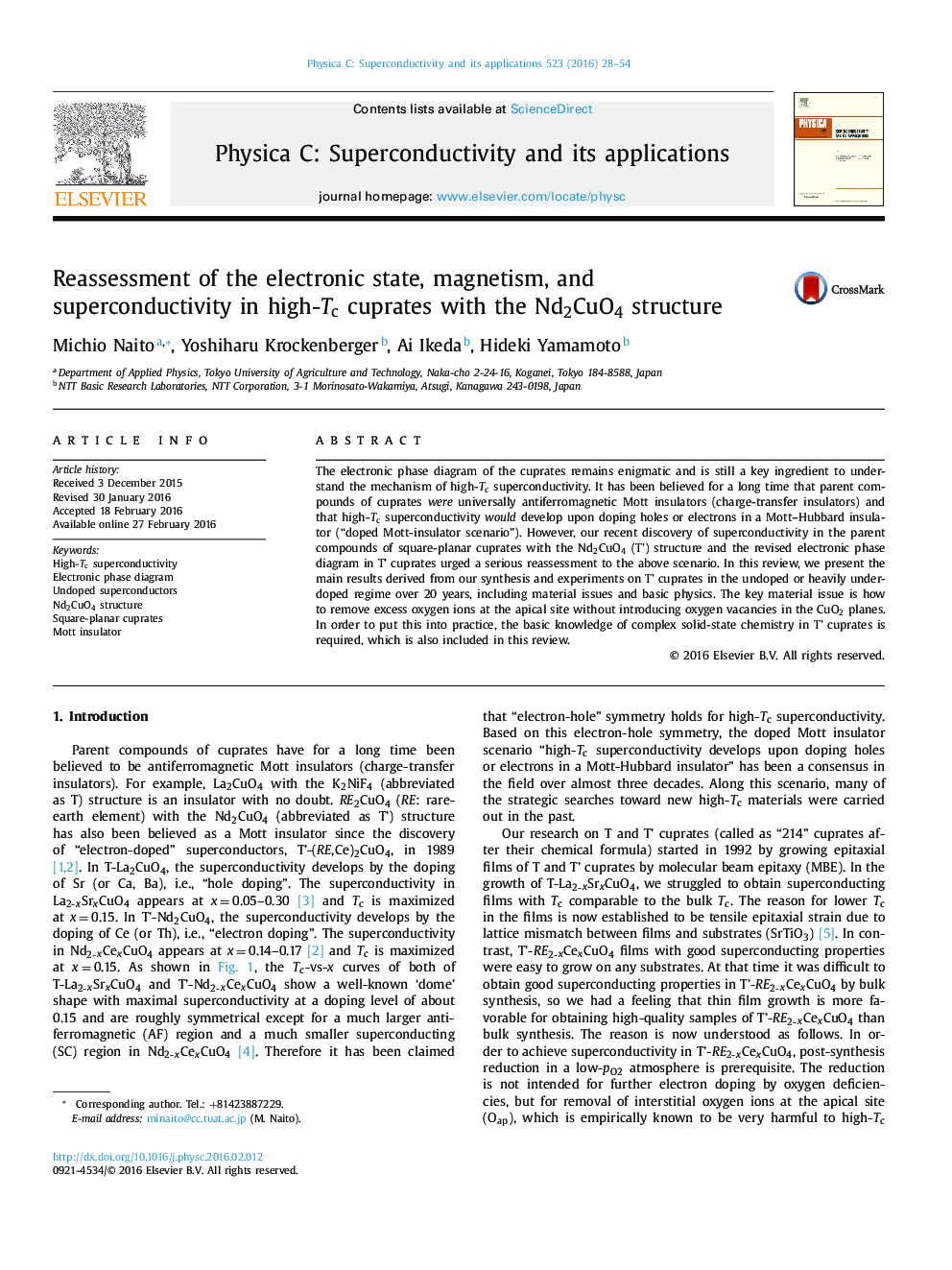| Article ID | Journal | Published Year | Pages | File Type |
|---|---|---|---|---|
| 1817382 | Physica C: Superconductivity and its Applications | 2016 | 27 Pages |
Abstract
The electronic phase diagram of the cuprates remains enigmatic and is still a key ingredient to understand the mechanism of high-Tc superconductivity. It has been believed for a long time that parent compounds of cuprates were universally antiferromagnetic Mott insulators (charge-transfer insulators) and that high-Tc superconductivity would develop upon doping holes or electrons in a Mott-Hubbard insulator (“doped Mott-insulator scenario”). However, our recent discovery of superconductivity in the parent compounds of square-planar cuprates with the Nd2CuO4 (T') structure and the revised electronic phase diagram in T' cuprates urged a serious reassessment to the above scenario. In this review, we present the main results derived from our synthesis and experiments on T' cuprates in the undoped or heavily underdoped regime over 20 years, including material issues and basic physics. The key material issue is how to remove excess oxygen ions at the apical site without introducing oxygen vacancies in the CuO2 planes. In order to put this into practice, the basic knowledge of complex solid-state chemistry in T' cuprates is required, which is also included in this review.
Related Topics
Physical Sciences and Engineering
Physics and Astronomy
Condensed Matter Physics
Authors
Michio Naito, Yoshiharu Krockenberger, Ai Ikeda, Hideki Yamamoto,
